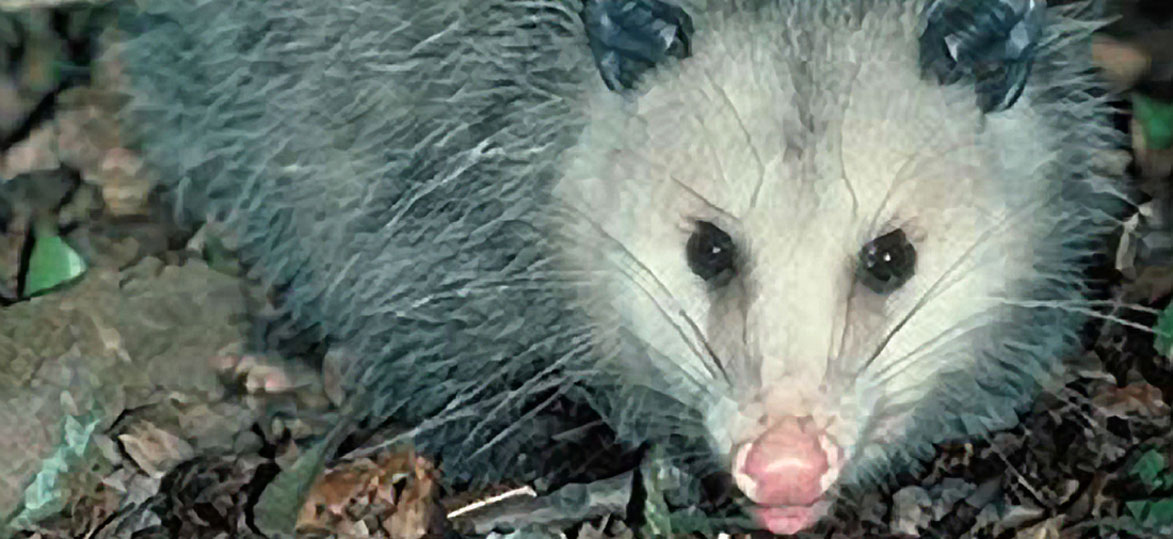
Virginia Opossum (Didelphis virginiana) is the only marsupial, or pouched mammal, native to North America. Although the opossum is not endemic to Vermont, a stable population has been established here.
Opossums are nocturnal, being most active at night, and are very aggressive animals. When approached by a potential predator, they will often hiss, screech, and bear all their teeth to ward away attack. They will also feign death, or "play possum" by closing its eyes and rolling over. Because they have poor social development, most opossums are solitary animals. The females will occasionally live in groups but the males fight whenever together. The opossum can adapt to a wide variety of habitats, which has led to its widespread distribution throughout the United States.
Habitat
Opossums inhabit a wide variety of habitats. They naturally prefer deciduous wooded areas near water sources, but can also be found in farmlands or marshes. They have become very common in urban, suburban and farming areas.
Opossums are wanderers, being nomadic and not staying in one specific territory. They reside in a variety of homes including abandoned burrows, tree cavities, hollow logs, attics, garages or building foundations. They are not adept at digging, so they often utilize burrows that another animal may have excavated.
Reproduction
The Virginia opossum breeds in late January to early July, after which the female constructs a nest in the hollow of a tree or an abandoned burrow. The young are born about 12 to 13 days after fertilization, from February through July. The female will raise one or two litters each year, with the first one generally in February and the second in June.
The litter size may range from five to 13 young, the average size being eight. The young opossums are incredibly small at birth, about the size of a honeybee, each weighing only 1/5 of a gram. They are blind and nearly helpless and, immediately after birth, must crawl into the vertical opening of the female's pouch. There, they begin to nurse.
Soon after the young opossum begins to nurse, the mother's nipple begins to quickly swell, filling the young's opossums entire mouth. This unusual occurrence causes the young to become attached to the nipple and unable to remove itself. For a period of 55 to 60 days the young nurse in this way, until they are finally large enough to detach themselves.
The young will then leave the pouch and, at this time, may be carried on the mother's back. By the time the young are 90 to 105 days old, they are independent of their mother. They reach sexual maturity at six to seven months of age. Typically, the females will mate and raise a litter the first breeding season following birth.
Diet
Opossums are insectivores and omnivores. This means they eat a varied diet of insects, worms, frogs, birds, fruits, nuts and carrion (dead animals). They will also prey on small rodents, voles, shrews and moles. Opossums are often seen feeding at compost piles, garbage cans and bird feeders.
Management
Current Virginia opossum populations within the state of Vermont are stable. There is no active plan designed for this species, but continued monitoring is conducted to ensure that their population remains healthy and abundant in Vermont.
Status
Opossums have adapted well to changes humans have made in the environment. They seem to continue to expand their geographic range, as Vermont exemplifies.
